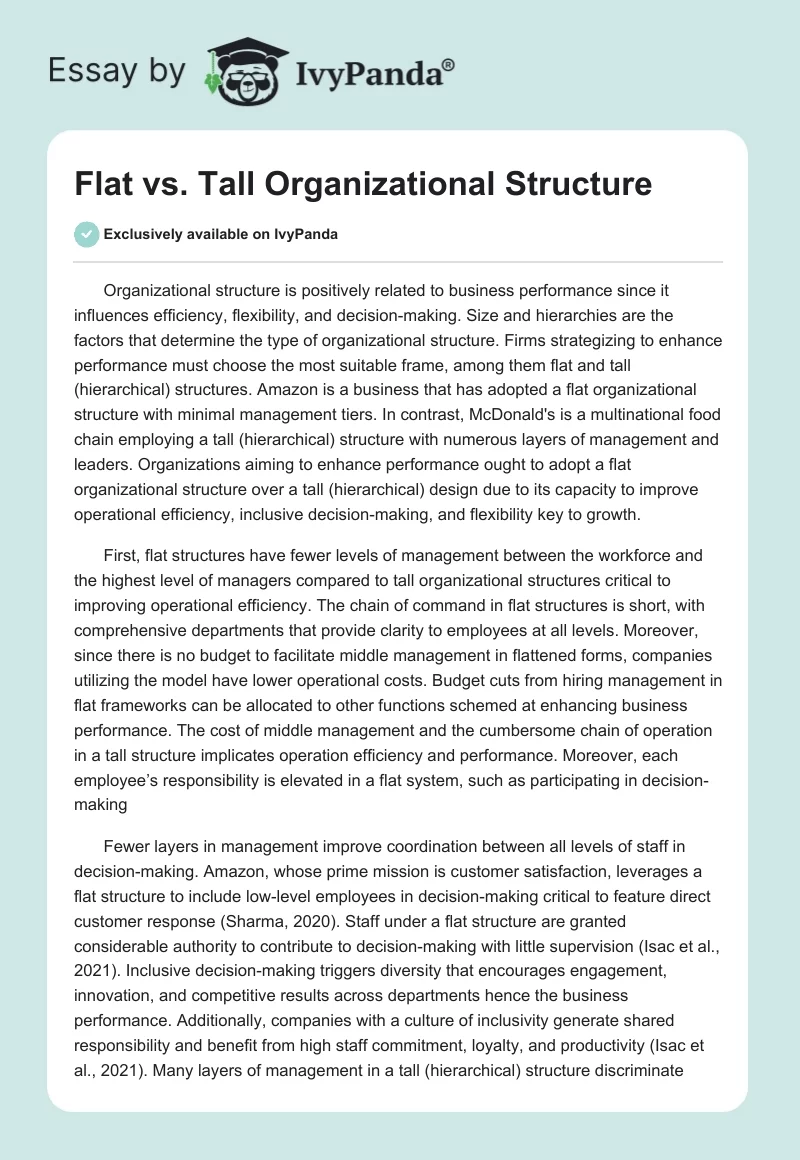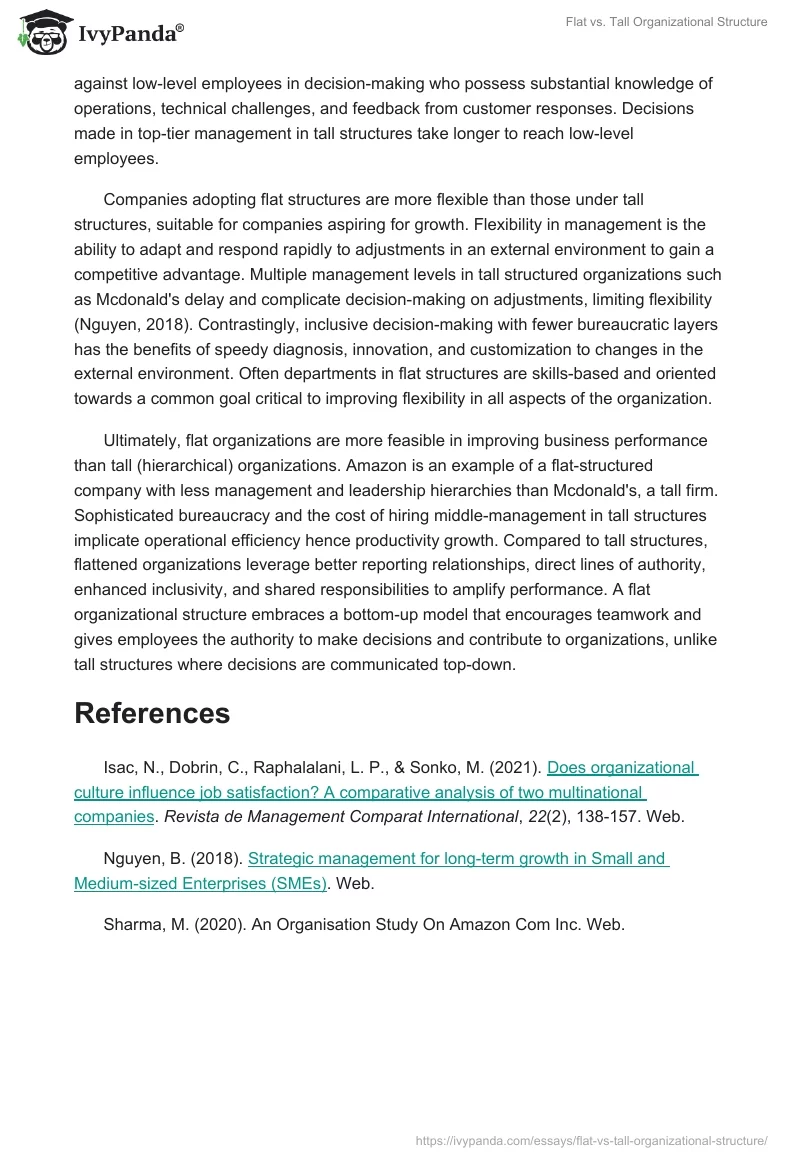Organizational structure is positively related to business performance since it influences efficiency, flexibility, and decision-making. Size and hierarchies are the factors that determine the type of organizational structure. Firms strategizing to enhance performance must choose the most suitable frame, among them flat and tall (hierarchical) structures. Amazon is a business that has adopted a flat organizational structure with minimal management tiers. In contrast, McDonald’s is a multinational food chain employing a tall (hierarchical) structure with numerous layers of management and leaders. Organizations aiming to enhance performance ought to adopt a flat organizational structure over a tall (hierarchical) design due to its capacity to improve operational efficiency, inclusive decision-making, and flexibility key to growth.
First, flat structures have fewer levels of management between the workforce and the highest level of managers compared to tall organizational structures critical to improving operational efficiency. The chain of command in flat structures is short, with comprehensive departments that provide clarity to employees at all levels. Moreover, since there is no budget to facilitate middle management in flattened forms, companies utilizing the model have lower operational costs. Budget cuts from hiring management in flat frameworks can be allocated to other functions schemed at enhancing business performance. The cost of middle management and the cumbersome chain of operation in a tall structure implicates operation efficiency and performance. Moreover, each employee’s responsibility is elevated in a flat system, such as participating in decision-making
Fewer layers in management improve coordination between all levels of staff in decision-making. Amazon, whose prime mission is customer satisfaction, leverages a flat structure to include low-level employees in decision-making critical to feature direct customer response (Sharma, 2020). Staff under a flat structure are granted considerable authority to contribute to decision-making with little supervision (Isac et al., 2021). Inclusive decision-making triggers diversity that encourages engagement, innovation, and competitive results across departments hence the business performance. Additionally, companies with a culture of inclusivity generate shared responsibility and benefit from high staff commitment, loyalty, and productivity (Isac et al., 2021). Many layers of management in a tall (hierarchical) structure discriminate against low-level employees in decision-making who possess substantial knowledge of operations, technical challenges, and feedback from customer responses. Decisions made in top-tier management in tall structures take longer to reach low-level employees.
Companies adopting flat structures are more flexible than those under tall structures, suitable for companies aspiring for growth. Flexibility in management is the ability to adapt and respond rapidly to adjustments in an external environment to gain a competitive advantage. Multiple management levels in tall structured organizations such as Mcdonald’s delay and complicate decision-making on adjustments, limiting flexibility (Nguyen, 2018). Contrastingly, inclusive decision-making with fewer bureaucratic layers has the benefits of speedy diagnosis, innovation, and customization to changes in the external environment. Often departments in flat structures are skills-based and oriented towards a common goal critical to improving flexibility in all aspects of the organization.
Ultimately, flat organizations are more feasible in improving business performance than tall (hierarchical) organizations. Amazon is an example of a flat-structured company with less management and leadership hierarchies than Mcdonald’s, a tall firm. Sophisticated bureaucracy and the cost of hiring middle-management in tall structures implicate operational efficiency hence productivity growth. Compared to tall structures, flattened organizations leverage better reporting relationships, direct lines of authority, enhanced inclusivity, and shared responsibilities to amplify performance. A flat organizational structure embraces a bottom-up model that encourages teamwork and gives employees the authority to make decisions and contribute to organizations, unlike tall structures where decisions are communicated top-down.
References
Isac, N., Dobrin, C., Raphalalani, L. P., & Sonko, M. (2021). Does organizational culture influence job satisfaction? A comparative analysis of two multinational companies. Revista de Management Comparat International, 22(2), 138-157. Web.
Nguyen, B. (2018). Strategic management for long-term growth in Small and Medium-sized Enterprises (SMEs). Web.
Sharma, M. (2020). An Organisation Study On Amazon Com Inc. Web.


